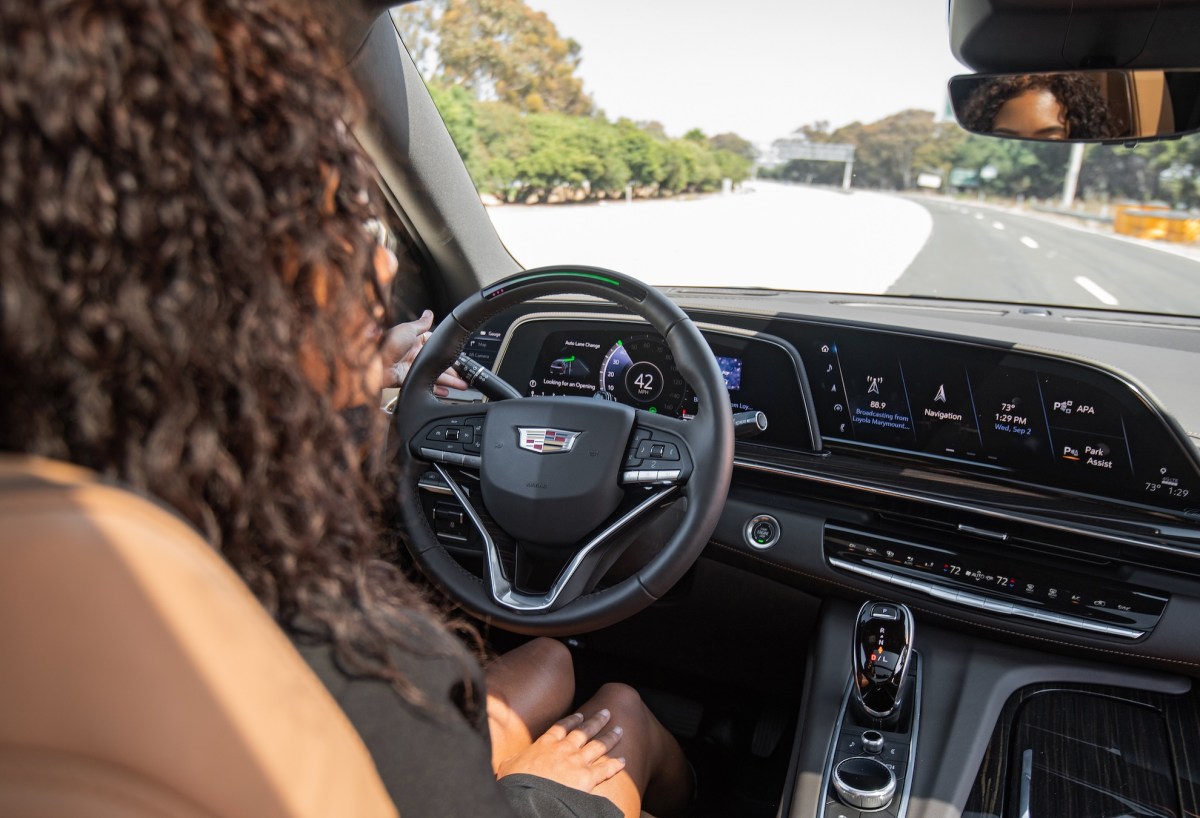Seven years ago, GM became the first automaker to offer hands-free driving when it rolled out its Super Cruise advanced driver assistance system. Now, it’s looking to push that capability even further with a system that would allow drivers to keep their eyes off the road too, according to one of GM’s top software executives. […]
© 2024 TechCrunch. All rights reserved. For personal use only.
Seven years ago, GM became the first automaker to offer hands-free driving when it rolled out its Super Cruise advanced driver assistance system. Now, it’s looking to push that capability even further with a system that would allow drivers to keep their eyes off the road too, according to one of GM’s top software executives.
These hands-off, eyes-off systems — also known in the industry as Level 3 or L3 — are not self-driving cars like the ones Waymo operates (which are considered Level 4). Instead, they typically operate only on highways and at reduced speeds. And unlike a robotaxi, the driver is still required to take control if needed.
Despite these constraints, a hands-off, eyes-off system would push GM beyond nearly every other automaker that offers an advanced driver assistance system. The majority of automakers today offer what is known as Level 2, a system that automates some of the driving, but still requires the driver to pay attention. Tesla’s Autopilot — and even its FSD software system — is still considered a Level 2 system, along with GM’s Super Cruise and Ford’s Blue Cruise systems.
Today, only Mercedes-Benz offers a limited hands-off, eyes-off system called Drive Pilot in the United States.
“Super Cruise, I think, is an industry-leading L2 solution for hands off, eyes on,” Dave Richardson, Senior Vice President of Software and Services Engineering at GM, told TechCrunch in a wide-ranging interview. “We’re looking aggressively to make that an L3 solution, where you don’t even have to look at the road anymore.”
Super Cruise uses a combination of lidar map data, high-precision GPS, cameras and radar sensors, as well as a driver-attention system, which monitors the person behind the wheel to ensure they’re watching the road. When the system is activated, it will accelerate or brake to maintain a selected following distance from a vehicle ahead, steer to keep its lane position, and make automatic change lanes to pass slower traffic.
While Super Cruise was the industry’s first true hands-free ADAS on the market when it launched in 2017, GM wasn’t viewed as a dominant player because it severely limited access to the system. For three years, the system was only available on one model, the Cadillac CT6, and was restricted to certain divided highways. Today, Super Cruise is widely available across GM brands like Chevrolet and GMC. By mid-2025, GM has said Super Cruise will be available on about 750,000 miles of roads in the United States and Canada, including rural and minor highways that often connect smaller cities and townships.
Richardson didn’t provide a timeline for when such a system might become publicly available. And he played coy as to exactly how far the company had progressed in this mission.
“When we have L3 I do think that’s meaningful … I think that’s a game changer,” Richardson said. The crux, of course, is knowing when such a system is fully developed; launching anything earlier could turn customers off, Richardson noted.
“If you don’t quite trust it, and it kicks you out, then it’s sort of like — the analogy I give sometimes is — you’re driving with your 15-year-old that’s just learning how to drive. You don’t really trust them, and it almost becomes a little bit more stressful.”
Some recent hires suggest the company is ramping up its efforts.
In December, GM hired Anantha Kancherla as vice president of ADAS. One of Kancherla’s directives is to take the foundation of Super Cruise and expand or innovate to the next phase, GM spokesperson Stuart Fowle said. That includes leveraging the Super Cruise system (notably through software) and applying it elsewhere. For instance, the monitoring system used to ensure driver’s eyes are on the road was recently applied to discouraging distracted driving even when Super Cruise isn’t activated. That new feature, known as driver attention assist, rolled out a few months ago.
Kancherla has had a long tech career in Silicon Valley working for Meta, Microsoft, and Dropbox. But it was his five years as VP engineering of software at Lyft’s autonomous vehicles unit that may prove most useful to GM. (Lyft eventually sold that business to Toyota.)
Kancherla and Richardson are among a cadre of recent software-focused hires that have hailed from Silicon Valley tech companies. Richardson joined GM last year after an 11-year stint at Apple.

Leave a Reply